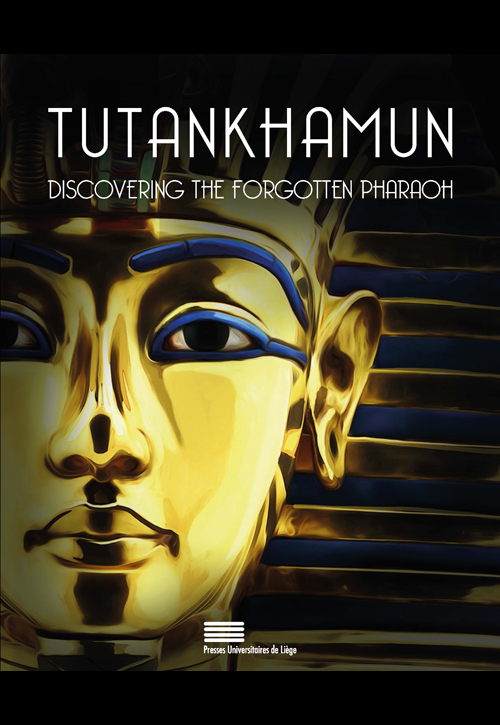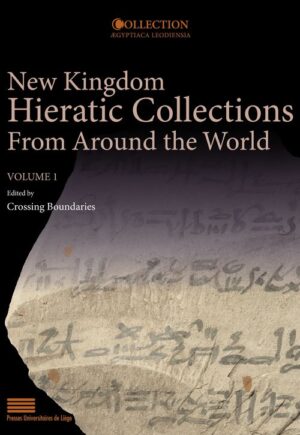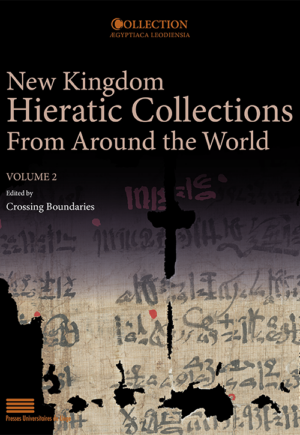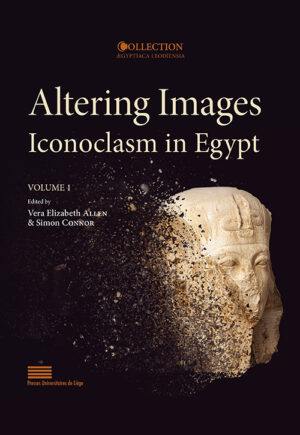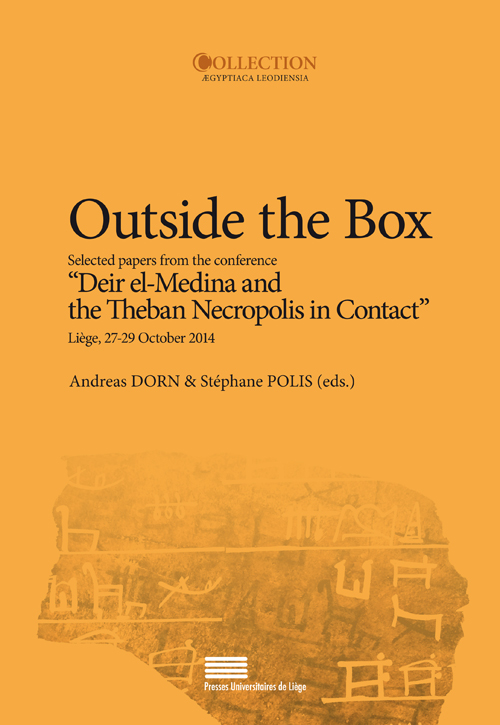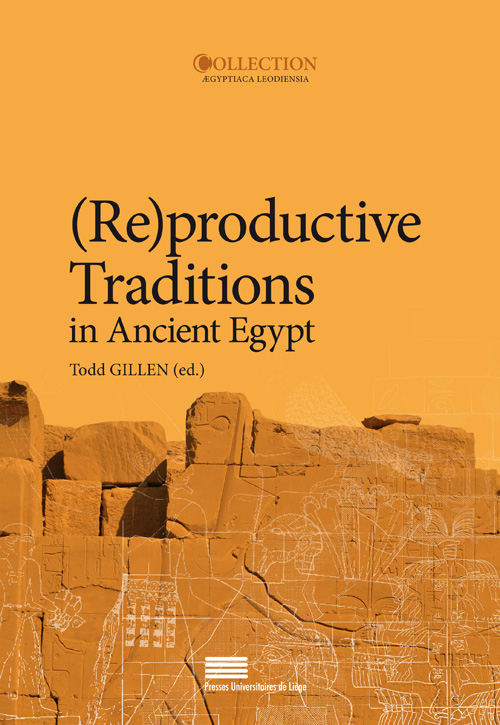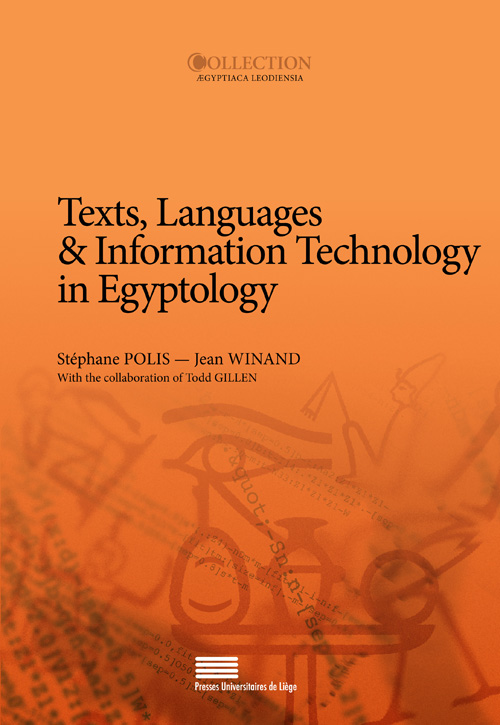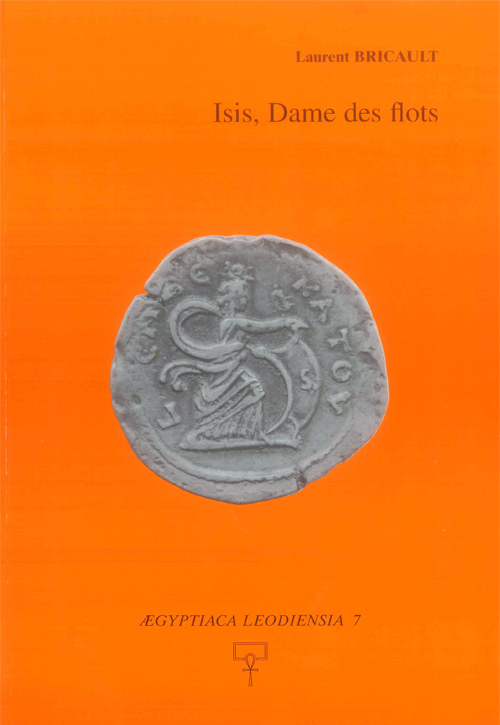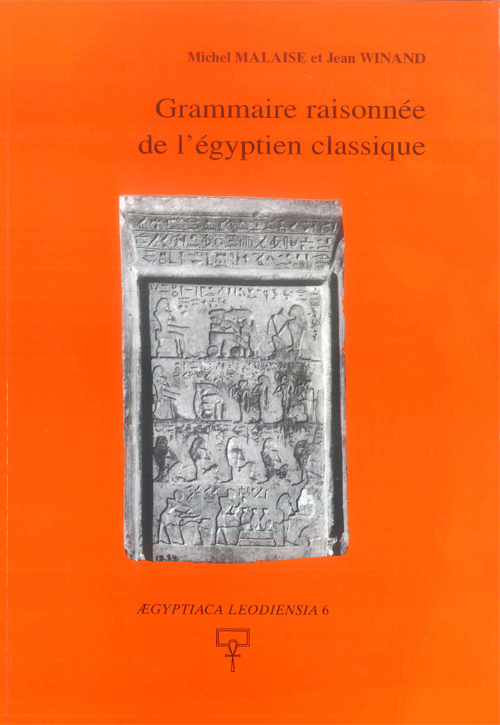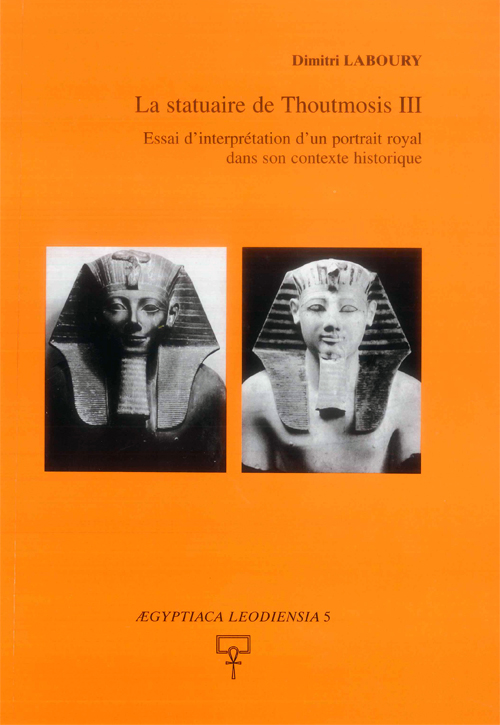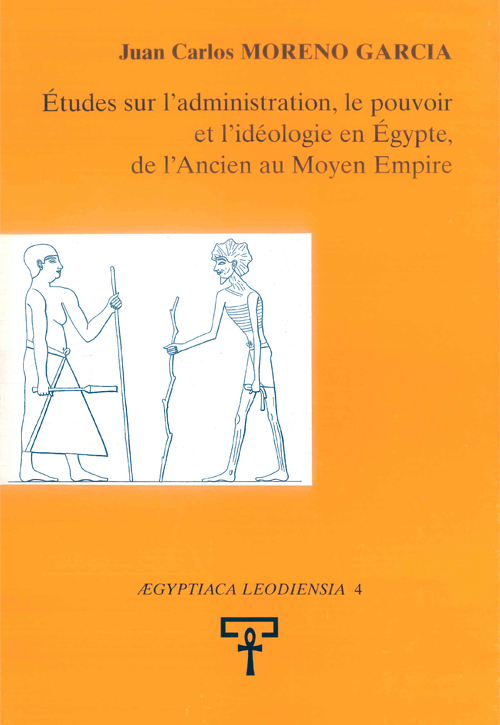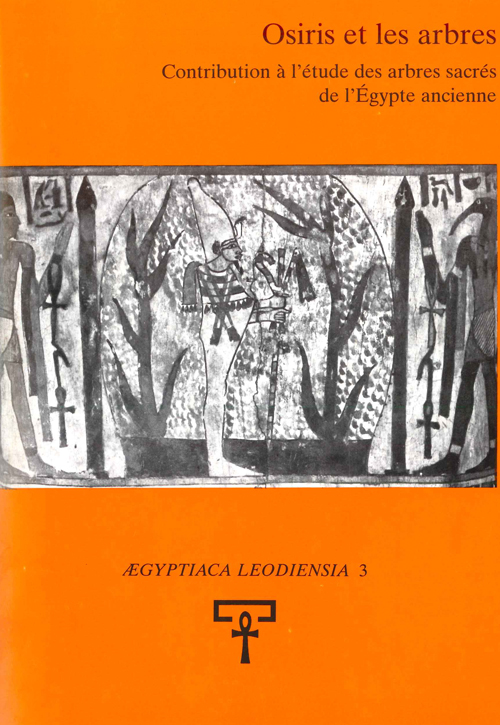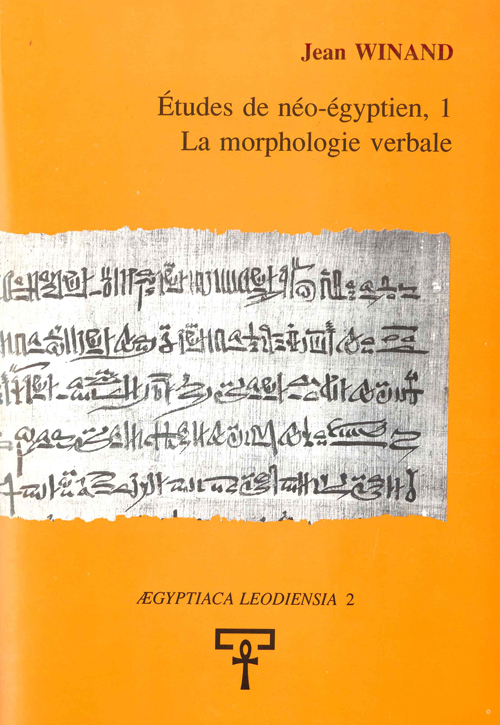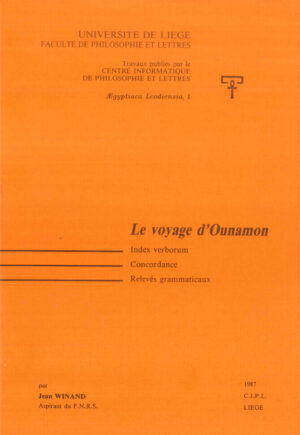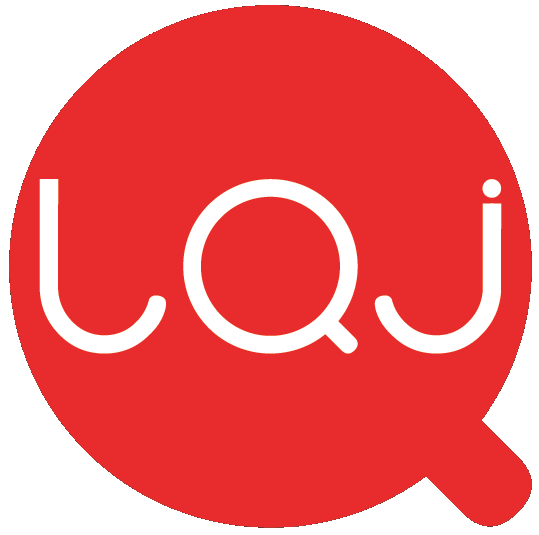Cet ouvrage est conçu comme un guide destiné à accompagner les visiteurs de l’exposition Toutankhamon, à la découverte du pharaon oublié (organisée par Europa Expo au centre d’exposition de la gare TGV internationale de Liège-Guillemins, du 14 décembre 2019 au 30 août 2020) et permet de contextualiser la visite en approfondissant les divers thèmes abordés. Près d’un siècle après la découverte la plus retentissante de l’histoire de l’archéologie, l’exposition vise, à travers une muséologie immersive et un parcours narratif et pédagogique, à raconter et expliquer l’histoire croisée de Howard Carter et du jeune pharaon qu’il a permis d’exhumer de l’oubli. Sont ainsi évoqués le parcours singulier de Howard Carter, son opiniâtre quête de la tombe de Toutankhamon, l’exploitation scientifique de sa découverte, l’Égypte dans laquelle Toutankhamon a grandi, puis régné, la vie quotidienne, les croyances et la production artistique à cette époque mouvementée de l’histoire pharaonique. Les avancées les plus récentes de notre connaissance de l’enfant-roi grâce aux technologies et méthodes d’investigation les plus modernes sont également envisagées, avant de terminer par l’impact que cette incroyable découverte a pu avoir sur l’art, la science archéologique et égyptologique et la vision collective que nous partageons désormais de la civilisation des pharaons. Richement illustré, le catalogue s’articule autour des différents thèmes abordés par l’exposition, mais aussi des choix muséographiques qui ont présidé à la réalisation de celle-ci. Il rassemble plus de 60 essais rédigés par des experts internationaux qui présentent les résultats les plus récents de leurs recherches et offre un regard renouvelé sur une série d’objets bien connus, tout en présentant nombre de pièces encore jamais montrées au public.
-
Discovering the Forgotten Pharaoh Exhibition Catalogue par S. CONNOR & D. LABOURY (eds)
-
Volume I Crossing Boundaries This book is the first in a series of volumes designed to provide a detailed overview of the New Kingdom hieratic materials preserved in various museums and public collections around the world. Each volume is arranged geographically and proceeds in alphabetic order—continent by continent and country by country. Volume 1 opens with a complete overview of the New Kingdom hieratic material in the Egyptian Museum in Cairo, which is followed by overviews of 18 European museums and 3 North American collections. The endeavour is directly connected to the interdisciplinary project Crossing Boundaries: Understanding Complex Scribal Practices in Ancient Egypt, a joint venture of the University of Basel, the University of Liège, and the Museo Egizio (Turin). Since 2019, the Crossing Boundaries project has targeted the rich papyrological materials from the village of Deir el-Medina (c. 1350–1050 BCE) held in the Museo Egizio, seeking to enhance our understanding of the scribal practices that lie behind the production of the texts from this community. The driving methodological motto of Crossing Boundaries has been to adopt a contextualized approach to these written documents. As progress was made on the Deir el-Medina materials, the need to develop a clearer picture of all the hieratic texts available from the same period quickly became evident, which is met by the present publication. Table des matières
- Andrea FANCIULLI, Kathrin GABLER, Jessica IZAK, Martina LANDRINO, Antonio LOPRIENO, Matthias MÜLLER, Renaud PIETRI, Stéphane POLIS, Nathalie SOJIC, Susanne TÖPFER, Stephan M. UNTER New Kingdom Hieratic Collections From Around the World. Introduction https://doi.org/10.25518/978-2-87562-416-1.01
- Khaled HASSAN New Kingdom Hieratic Texts in the Egyptian Museum in Cairo. Survey and History of the Collection https://doi.org/10.25518/978-2-87562-416-1.02
- Friedhelm HOFFMANN Klagenfurt, Landesmuseum für Kärnten. Zwei neuzeitliche Papyruspäckchen https://doi.org/10.25518/978-2-87562-416-1.03
- Stéphanie BOULET, Luc DELVAUX, Robert J. DEMARÉE, Christian DUPUIS & Benoît LURSON Hieratic Ostraca and Jar Dockets in the Royal Museums of Art and History (Brussels). An Interdisciplinary Edition and Study https://doi.org/10.25518/978-2-87562-416-1.04
- Sofie SCHIØDT New Kingdom Hieratic Texts in Danish Collections https://doi.org/10.25518/978-2-87562-416-1.05
- Jan MOJE The New Kingdom Hieratic Material in the Ägyptisches Museum & Papyrussammlung in Berlin. A Brief Overview https://doi.org/10.25518/978-2-87562-416-1.06
- Hans-Werner FISCHER-ELFERT Ägyptisches Museum der Universität Leipzig https://doi.org/10.25518/978-2-87562-416-1.07
- Maren GOECKE-BAUER, Friedhelm HOFFMANN, Philipp SEYR, Martina ULLMANN, Stefan WIMMER Die hieratischen Papyrusfragmente der Universitätsbibliothek München. P. UBM Cim. 93 (1–3 [= 8o Cod. ms. 431a, 431b, 431c]) https://doi.org/10.25518/978-2-87562-416-1.08
- Martina LANDRINO A Wine-Jar Label in the National Museum of Ireland, Dublin https://doi.org/10.25518/978-2-87562-416-1.09
- Daniela PICCHI, Paul WHELAN & Alessandro GALLI From Egypt to Bologna: Stories of Collectors and Objects Inscribed with Hieratic Texts https://doi.org/10.25518/978-2-87562-416-1.10
- Anna CONSONNI & Federico CONTARDI The New Kingdom Hieratic Collection of the Museo Archeologico Nazionale di Firenze — “Museo Egizio” https://doi.org/10.25518/978-2-87562-416-1.11
- Andrei N. NIKOLAEV & Andrey O. BOLSHAKOV The State Hermitage Museum https://doi.org/10.25518/978-2-87562-416-1.12
- Robert J. DEMARÉE & Andreas DORN Textile and Fish Accounts from the Palace Administration of Ramesses II in Gurob. Fragments of Ramesside Administrative Documents in the Museum Kulturen in Lund https://doi.org/10.25518/978-2-87562-416-1.13
- Andreas DORN Hieratic Texts on Figurative Ostraca: Above, Besides, and Below the Images. Hieratic Documents in the Medelhavsmuseet (Stockholm) https://doi.org/10.25518/978-2-87562-416-1.14
- Andreas DORN Nil novi sub sole? Hieratic Documents in the Museum Gustavianum (the Uppsala University Collection) https://doi.org/10.25518/978-2-87562-416-1.15
- Jean-Luc CHAPPAZ Documents conservés dans les institutions de Genève https://doi.org/10.25518/978-2-87562-416-1.16
- Daniel M. POTTER National Museums Scotland. New Kingdom Hieratic Texts in Edinburgh https://doi.org/10.25518/978-2-87562-416-1.17
- Angela McDONALD & Andrew MILLS New Kingdom Hieratic Texts in The Hunterian, University of Glasgow https://doi.org/10.25518/978-2-87562-416-1.18
- Ilona REGULSKI & Susanne BECK New Kingdom Hieratic Material at the British Museum. Unedited Fragments from a Fake Papyrus Roll in the British Museum (P. BM EA 10720.6 and P. BM EA 10720.4) https://doi.org/10.25518/978-2-87562-416-1.19
- Stephen QUIRKE & Fredrik HAGEN New Kingdom Hieratic in the UCL Petrie Museum of Egyptian and Sudanese Archaeology. Collection-level Summary, and a Preliminary Report on the Gurob Papyri https://doi.org/10.25518/978-2-87562-416-1.20
- Lawrence M. BERMAN & Margaret GEOGA New Kingdom Hieratic Documents in the Museum of Fine Arts, Boston https://doi.org/10.25518/978-2-87562-416-1.21
- Brian P. MUHS & Foy D. SCALF New Kingdom Hieratic Manuscripts in the Oriental Institute Museum (Chicago) https://doi.org/10.25518/978-2-87562-416-1.22
- Foy SCALF, Judith BARR & Sara E. COLE Two New Kingdom Hieratic Manuscripts from the Collection of the J. Paul Getty Museum, Los Angeles https://doi.org/10.25518/978-2-87562-416-1.23
-
Volume II Crossing Boundaries This book is the second in a series of volumes designed to provide a detailed overview of the New Kingdom hieratic materials preserved in various museums and public collections around the world. Each volume is arranged geographically and proceeds in alphabetic order—continent by continent and country by country. Volume 2 contains overviews (and case studies) of 13 European museums and collections, including the French National Library (BnF, Paris), the Louvre (Paris), the Museo Egizio (Turin), the Rijksmuseum van Oudheden (Leiden), and the Vatican Museums. The endeavour is directly connected to the interdisciplinary project Crossing Boundaries: Understanding Complex Scribal Practices in Ancient Egypt, a joint venture of the University of Basel, the University of Liège, and the Museo Egizio (Turin). Since 2019, the Crossing Boundaries project has targeted the rich papyrological materials from the village of Deir el-Medina (c. 1350–1050 BCE) held in the Museo Egizio, seeking to enhance our understanding of the scribal practices that lie behind the production of the texts from this community. The driving methodological motto of Crossing Boundaries has been to adopt a contextualized approach to these written documents. As progress was made on the Deir el-Medina materials, the need to develop a clearer picture of all the hieratic texts available from the same period quickly became evident, which is met by the present publication. Table des matières
- Andrea FANCIULLI, Kathrin GABLER, Jessica IZAK, Martina LANDRINO, Matthias MÜLLER, Renaud PIETRI, Stéphane POLIS, Nathalie SOJIC, Stephan M. UNTER New Kingdom Hieratic Collections From Around the World. Introduction https://doi.org/10.25518/978-2-87562-432-1.01
- Bettina BADER, Charlotte DIETRICH, Johannes JÜNGLING & Julian POSCH New Kingdom Hieratic at the Kunsthistorisches Museum, Vienna https://doi.org/10.25518/978-2-87562-432-1.02
- Vanessa DESCLAUX & Chloé RAGAZZOLI New Kingdom Hieratic Texts in the French National Library With a Focus on an Unpublished Deir el-Medina Archive (P. BN Ms. Égyptien 237) https://doi.org/10.25518/978-2-87562-432-1.03
- Marc ÉTIENNE Le veau du dessinateur Hormin (P. Louvre E 32309) https://doi.org/10.25518/978-2-87562-432-1.04
- Sylvie DONNAT New Kingdom Hieratic Texts in the Strasbourg Collections. An Overview https://doi.org/10.25518/978-2-87562-432-1.05
- Dominique LEFÈVRE Le papyrus Strasbourg 23i+44iii https://doi.org/10.25518/978-2-87562-432-1.06
- Mélanie FLOSSMANN-SCHÜTZE & Maren GOECKE-BAUER Von lehrreichen Texten, Rosinen für die Liebe und einem Wein auf Reisen Hieratika des Neuen Reiches im Staatlichen Museum Ägyptischer Kunst München https://doi.org/10.25518/978-2-87562-432-1.07
- Kata JASPER & Julianna K. PAKSI New Kingdom Hieratic Sources in the Collection of the Museum of Fine Arts, Budapest https://doi.org/10.25518/978-2-87562-432-1.08
- Sara DEMICHELIS, Andrea FANCIULLI & Susanne TÖPFER New Kingdom Hieratic Material in the Museo Egizio in Turin https://doi.org/10.25518/978-2-87562-432-1.09
- Alessia AMENTA, Florence ALBERT, Sara DEMICHELIS & Chiara FORNACIARI DA PASSANO New Kingdom Hieratic Papyri in the Collection of the Vatican Museums https://doi.org/10.25518/978-2-87562-432-1.10
- Daniel SOLIMAN New Kingdom Hieratic Texts in the Collection of the Rijksmuseum van Oudheden in Leiden https://doi.org/10.25518/978-2-87562-432-1.11
- Isabel OLBÉS RUIZ DA ALDA, Esther PONS MELLADO, With Rob J. DEMARÉE, Stéphane POLIS & Federico POOLE Three Objects with Hieratic Inscriptions in the Museo Arqueológico Nacional (Madrid). Wooden Coffin with Stick Shabti 2524 and Ostracon 16243 https://doi.org/10.25518/978-2-87562-432-1.12
- Martin BÜRGE, Rob J. DEMARÉE, Matthias MÜLLER & Malte RÖMER New Kingdom Hieratic Sources in the Archaeological Collection of the University of Zurich https://doi.org/10.25518/978-2-87562-432-1.13
- Dominique LEFÈVRE & Xavier DROUX Les documents hiératiques du Nouvel Empire conservés à la Fondation Gandur pour l’Art, Genève. Un groupe exceptionnel de jarres inscrites en calcite-albâtre https://doi.org/10.25518/978-2-87562-432-1.14
- Ashley COOKE, Roland ENMARCH & Joel SAMS New Kingdom Hieratic Material in World Museum, Liverpool https://doi.org/10.25518/978-2-87562-432-1.15
-
Simon CONNOR & Vera Elizabeth ALLEN (ed.) This volume originates from a two-part conference held in 2020 and 2021, jointly organised by eikones – Centre for the Study of the History and Theory of the Image at the University of Basel and the University of Liège. It explores the diachronic reception of pharaonic imagery and the conditions that led to its alteration. Paradoxically, iconoclasm—intended to diminish the power of images—ultimately reinforces the significance of the ever-powerful visual, as it continues to provoke strong emotional responses, whether of veneration or destruction. The study of defaced images reveals discernible patterns, yet no universal rule: acts of iconoclasm are deeply influenced by historical, social, and political contexts. In today’s media-saturated world, their impact is further magnified, as exemplified by the destruction of the Buddhas of Bamiyan or the removal of controversial statues during movements linked to Black Lives Matter and post-colonial. By examining traces of mutilation, this double volume seeks to uncover the intentions and motivations behind these acts. Iconoclasm, however, extends beyond mere destruction—images were often repurposed, modified or even buried to imbue them with new meaning. In many cases, defacement specifically targets relevant or even symbolic features, such as body parts associated with identity, ritual significance, or functions in offerings and fertility rites. The contributors draw upon textual sources, material analysis, and archaeological evidence to interpret these transformations. Ultimately, the perception of altered images remains a subject of debate, often shaped by political and ideological narratives. By adopting an interdisciplinary and diachronic perspective, this volume offers a nuanced exploration of the enduring complexity of image destruction and reinterpretation.
-
Selected papers from the conference “Deir el-Medina and the Theban Necropolis in Contact” Liège, 27-29 October 2014 par Andreas DORN & Stéphane POLIS (eds.)
This volume represents the outcome of the conference “Deir el-Medina and the Theban Necropolis in Contact: Describing the interactions within and outside the community of workmen” held in Liège in 2014 (27-29 October). The goal of this conference was to encourage a wider perspective on Deir el-Medina, bringing together scholars from all egyptological fields and disciplines who are interested in studying the many types of interactions that the ancient community of Deir el-Medina developed both internally and at the broader (supra-)regional level.
The title of the volume, “Outside the box,” refers to two important dimensions touched on by the papers in this volume. First, it points to the fact that a vast quantity of documents from Deir el-Medina and, more broadly, from the Theban Necropolis has been available for a long time to some restricted academic circles, but are now to be taken outside the box: this holds true not only for the publication of papyri and ostraca preserved in many collections across the world, but also for archival material describing the excavations at the site itself, and more broadly for the monuments that remain there still, but are not available to scholars or the general public. Second, most of the papers collected in this volume share a common feature, namely their attempt to think outside the box, using new theoretical frameworks, cross-disciplinary approaches, or innovative technological solutions. Accordingly, “Outside the box,” can be read both as a plea for making the fascinating material from Deir el-Medina more broadly available, and as a shout of admiration regarding the creativity and tireless inventiveness of scholars working on the sources stemming from this exceptional socio-cultural setting.
Andreas Dorn is professor of Egyptology at the University of Uppsala (Sweden). He specializes in cultural history, archaeology and architecture. He focuses mainly on the contextualisation of artefacts, including text-bearing objects, in order to investigate micro-historical phenomena. His ongoing research projects include the publication of the burial equipment of king Sety I, the architecture and archaeology of the tomb of Siptah, newly discovered graffiti in the Valley of the Kings and in the nearby desert valleys as well as the publication of hieratic texts from Deir el-Medina with a special focus on the texts linked to Amennakhte, son of Ipuy, whose biography forms part of a long-term project.
Stéphane Polis is research associate at the National Fund for Scientific Research (Belgium). His fields of research are ancient Egyptian linguistics, and Late Egyptian philology and grammar. His work focuses, on the one hand, on language variation and language change in Ancient Egyptian, and, on the other hand, on the publication and analysis of hieratic material from the community of Deir el-Medina. He supervises the development of the Ramses Project at the University of Liège with Jean Winand, and coordinates the Thot Sign List project and the semantic maps project Le Diasema with Thanasis Georgakopoulos.
-
Proceedings of the conference held at the University of Liège, 6th-8th February 2013 par Todd GILLEN (ed.)
Tradition is central to Egyptology, and this volume discusses and problematises the concept by bringing together the most recent work on archaeological, art historical and philological material from the Predynastic to the Late Period. The eclectic mix of material in this volume takes us from New Kingdom artists in the Theban foothills to Old Kingdom Abusir, and from changing ideas about literary texts to the visual effects of archaising statuary. With themes of diachrony persisting at the centre, aspects of tradition are approached from a variety of perspectives: as sets of conventions abstracted from the continuity of artefactual forms; as processes of knowledge (and practice) acquisition and transmission; and as relevant to the individuals and groups involved in artefact production. The volume is divided into four main sections, the first three of which attempt to reflect the different material foci of the contributions: text, art, and artefacts. The final section collects papers dealing with traditions which span different media.
The concepts of cultural productivity and reproductivity are inspired by the field of text criticism and form common reference points for describing cultural change across contributions discussing disparate kinds of data. Briefly put, productive or open traditions are in a state of flux that stands in dialectic relation to shifting social and historical circumstances, while reproductive or closed traditions are frozen at a particular historical moment and their formulations are thereafter faithfully passed down verbatim. The scholars in this volume agree that a binary categorisation is restrictive, and that a continuum between the two poles of dynamic productivity and static reproductivity is by all means relevant to and useful for the description of various types of cultural production.
This volume represents an interdisciplinary collaboration around a topic of perennial interest, a rarity in a field increasingly fractured by progressive specialisation.
Todd GILLEN earned his PhD in Egyptology from Macquarie University, Sydney, and worked as a postdoctoral fellow for the Ramses project at the University of Liège. He has published on a variety of topics relating to ancient Egyptian text and culture of the New Kingdom. He is currently pursuing a career in psychology and counselling.
-
Selected papers from the meeting of the Computer Working Group of the International Association of Egyptologists (Informatique & Égyptologie), Liège, 6-8 July 2010 par Stéphane POLIS et Jean WINAND with the collaboration of Todd GILLEN Présentation du volume
This volume represents the outcome of the meeting of the Computer Working Group of the International Association of Egyptologists (Informatique & Égyptologie) held in Liège in 2010 (6-8 July) under the auspices of the Ramses Project. The papers are based on presentations given during this meeting and have been selected in order to cover three main thematic areas of research at the intersection of Egyptology and Information Technology: (1) the construction, management and use of Ancient Egyptian annotated corpora; (2) the problems linked to hieroglyphic encoding; (3) the development of databases in the fields of art history, philology and prosopography. The contributions offer an up-to-date state of the art, discuss the most promising avenues for future research, developments and implementation, and suggest solutions to longstanding issues in the field.
Two general trends characterize the projects laid out here: the desire for online accessibility made available to the widest possible audience; and the search for standardization and interoperability. The efforts in these directions are admittedly of paramount importance for the future of Egyptological research in general. Indeed, for the present and increasingly for the future, one cannot overemphasize the (empirical and methodological) impact of a generalized access to structured data of the highest possible quality that can be browsed and exchanged without loss of information.
Notice des auteurs
Stéphane POLIS is Research Associate at the National Fund for Scientific Research (Belgium). His fields of research are Ancient Egyptian linguistics and Late Egyptian philology and grammar. His work focuses on language variation and language change in Ancient Egyptian, with a special interest for the functional domain of modality. He supervises the development of the Ramses Project at the University of Liège with Jean Winand.
Jean WINAND is professor ordinarius at the University of Liège, and currently Dean of the Faculty of Philosophy and Letters. He specializes in texts and languages of ancient Egypt. His major publications include Études de néo-égyptien. La morphologie verbale (1992); Grammaire raisonnée de l’Égyptien classique (1999, with Michel Malaise); Temps et Aspect en égyptien. Une approche sémantique (2006). He launched the Ramses Project in 2006, which he supervises with Stéphane Polis.
-
Stock épuiséÉPUISÉ Avec une introduction grammaticale et une liste des mots présentés selon le classificateur sémantique par Jean WINAND et Alessandro STELLA avec la collaboration de Laurence NEVEN Présentation du volume
À côté des dictionnaires généraux qui embrassent plusieurs états de la langue égyptienne, comme le classique Wörterbuch der ägyptischen Sprache d’Erman et Grapow ou le Großes Handwörterbuch de Hannig, on déplore l’absence d’outils modernes dont le premier public sont les étudiants qui commencent l’étude de la langue égyptienne.
Le volume qui est présenté ici est un lexique moyen égyptien – français. Son but avoué est d’abord de rendre service aux étudiants qui entament un premier cycle d’étude en moyen égyptien. Ce n’est donc pas un dictionnaire scientifique de référence. Son ambition est limitée : d’abord par le nombre de mots retenus (env. 2500), ensuite par le nombre restreint de renseignements qu’il contient. Le lecteur trouvera pour chaque mot une graphie, jugée la plus représentative, la transcription, l’appartenance à une classe de mots, et une traduction standard. On retiendra toutefois deux innovations majeures : d’abord, le regroupement des mots en fonction de la racine ; ensuite, une liste des mots classés en fonction du classificateur sémantique.
Le corpus considéré est, en gros, l’égyptien classique (textes littéraires et textes d’affichage) et le moyen égyptien (textes de la pratique). L’ère chronologique couverte va de la Première Période Intermédiaire jusqu’à la xviiie dynastie. En préambule, le lecteur trouvera une présentation générale, volontairement réduite, de l’écriture hiéroglyphique, de l’histoire de la langue égyptienne, de la formation des mots, et un aperçu synthétique de la grammaire de l’égyptien classique.
Notice des auteurs
Jean WINAND est professeur ordinaire à l’Université de Liège et Doyen de la Faculté de Philosophie et Lettres. Ses domaines de recherche sont la langue et la philologie de l’Égypte ancienne. Il a publié, entre autres, Études de néo-égyptien. La morphologie verbale (1992), Grammaire raisonnée de l’Égyptien classique (1999, avec Michel Malaise), Temps et Aspect en égyptien. Pour une approche sémantique (2006).
Alessandro STELLA est doctorant à l’Université de Liège, où il étudie les verbes de perception visuelle en égyptien ancien selon une perspective diachronique. Ses domaines de recherche sont la lexicologie, la lexicographie, la sémantique lexicale et la philologie.
-
par Laurent BRICAULT 1. Jean WINAND, Le voyage d'Ounamon. Index verborum, concordance, relevés grammaticaux, 1987. 2. Jean WINAND, Études de néo-égyptien, 1. La morphologie verbale, 1992. 3. Pierre KOEMOTH, Osiris et les arbres. Contribution à l'étude des arbres sacrés de l'Égypte ancienne, 1994. 4. Juan Carlos MORENA GARCIA, Études sur l'administration, le pouvoir et l'idéologie en Égypte, de l'Ancien au Moyen Empire, 1997. 5. Dimitri LABOURY, La statuaire de Thoutmosis III. Essai d'interprétation d'un portrait royal dans son contexte historique, 1998. 6. Michel MALAISE & Jean WINAND, Grammaire raisonnée de l'égyptien classique, 1999. 7. Laurent BRICAULT, Isis, Dame des flots, 2006.
-
Stock épuisépar Michel MALAISE et Jean WINAND
1. Jean WINAND, Le voyage d'Ounamon. Index verborum, concordance, relevés grammaticaux, 1987. 2. Jean WINAND, Études de néo-égyptien, 1. La morphologie verbale, 1992. 3. Pierre KOEMOTH, Osiris et les arbres. Contribution à l'étude des arbres sacrés de l'Égypte ancienne, 1994. 4. Juan Carlos MORENA GARCIA, Études sur l'administration, le pouvoir et l'idéologie en Égypte, de l'Ancien au Moyen Empire, 1997. 5. Dimitri LABOURY, La statuaire de Thoutmosis III. Essai d'interprétation d'un portrait royal dans son contexte historique, 1998. 6. Michel MALAISE & Jean WINAND, Grammaire raisonnée de l'égyptien classique, 1999. 7. Laurent BRICAULT, Isis, Dame des flots, 2006.
-
Essai d'interprétation d'un portrait royal dans son contexte historique par Dimitri LABOURY 1. Jean WINAND, Le voyage d'Ounamon. Index verborum, concordance, relevés grammaticaux, 1987. 2. Jean WINAND, Études de néo-égyptien, 1. La morphologie verbale, 1992. 3. Pierre KOEMOTH, Osiris et les arbres. Contribution à l'étude des arbres sacrés de l'Égypte ancienne, 1994. 4. Juan Carlos MORENA GARCIA, Études sur l'administration, le pouvoir et l'idéologie en Égypte, de l'Ancien au Moyen Empire, 1997. 5. Dimitri LABOURY, La statuaire de Thoutmosis III. Essai d'interprétation d'un portrait royal dans son contexte historique, 1998. 6. Michel MALAISE & Jean WINAND, Grammaire raisonnée de l'égyptien classique, 1999.
-
Stock épuisépar Juan Carlos MORENO GARCIA 1. Jean WINAND, Le voyage d'Ounamon. Index verborum, concordance, relevés grammaticaux, 1987. 2. Jean WINAND, Études de néo-égyptien, 1. La morphologie verbale, 1992. 3. Pierre KOEMOTH, Osiris et les arbres. Contribution à l'étude des arbres sacrés de l'Égypte ancienne, 1994. 4. Juan Carlos MORENA GARCIA, Études sur l'administration, le pouvoir et l'idéologie en Égypte, de l'Ancien au Moyen Empire, 1997. 5. Dimitri LABOURY, La statuaire de Thoutmosis III. Essai d'interprétation d'un portrait royal dans son contexte historique, 1998. 6. Michel MALAISE & Jean WINAND, Grammaire raisonnée de l'égyptien classique, 1999. 7. Laurent BRICAULT, Isis, Dame des flots, 2006.
-
par Pierre KOEMOTH 1. Jean WINAND, Le voyage d'Ounamon. Index verborum, concordance, relevés grammaticaux, 1987. 2. Jean WINAND, Études de néo-égyptien, 1. La morphologie verbale, 1992. 3. Pierre KOEMOTH, Osiris et les arbres. Contribution à l'étude des arbres sacrés de l'Égypte ancienne, 1994. 4. Juan Carlos MORENA GARCIA, Études sur l'administration, le pouvoir et l'idéologie en Égypte, de l'Ancien au Moyen Empire, 1997. 5. Dimitri LABOURY, La statuaire de Thoutmosis III. Essai d'interprétation d'un portrait royal dans son contexte historique, 1998. 6. Michel MALAISE & Jean WINAND, Grammaire raisonnée de l'égyptien classique, 1999. 7. Laurent BRICAULT, Isis, Dame des flots, 2006.
-
Stock épuiséLa morphologie verbale par Jean WINAND 1. Jean WINAND, Le voyage d'Ounamon. Index verborum, concordance, relevés grammaticaux, 1987. 2. Jean WINAND, Études de néo-égyptien, 1. La morphologie verbale, 1992. 3. Pierre KOEMOTH, Osiris et les arbres. Contribution à l'étude des arbres sacrés de l'Égypte ancienne, 1994. 4. Juan Carlos MORENA GARCIA, Études sur l'administration, le pouvoir et l'idéologie en Égypte, de l'Ancien au Moyen Empire, 1997. 5. Dimitri LABOURY, La statuaire de Thoutmosis III. Essai d'interprétation d'un portrait royal dans son contexte historique, 1998. 6. Michel MALAISE & Jean WINAND, Grammaire raisonnée de l'égyptien classique, 1999. 7. Laurent BRICAULT, Isis, Dame des flots, 2006.
-
Index verborum, Concordance, Relevés grammaticaux par Jean WINAND 1. Jean WINAND, Le voyage d'Ounamon. Index verborum, concordance, relevés grammaticaux, 1987. 2. Jean WINAND, Études de néo-égyptien, 1. La morphologie verbale, 1992. 3. Pierre KOEMOTH, Osiris et les arbres. Contribution à l'étude des arbres sacrés de l'Égypte ancienne, 1994. 4. Juan Carlos MORENA GARCIA, Études sur l'administration, le pouvoir et l'idéologie en Égypte, de l'Ancien au Moyen Empire, 1997. 5. Dimitri LABOURY, La statuaire de Thoutmosis III. Essai d'interprétation d'un portrait royal dans son contexte historique, 1998. 6. Michel MALAISE & Jean WINAND, Grammaire raisonnée de l'égyptien classique, 1999. 7. Laurent BRICAULT, Isis, Dame des flots, 2006.

